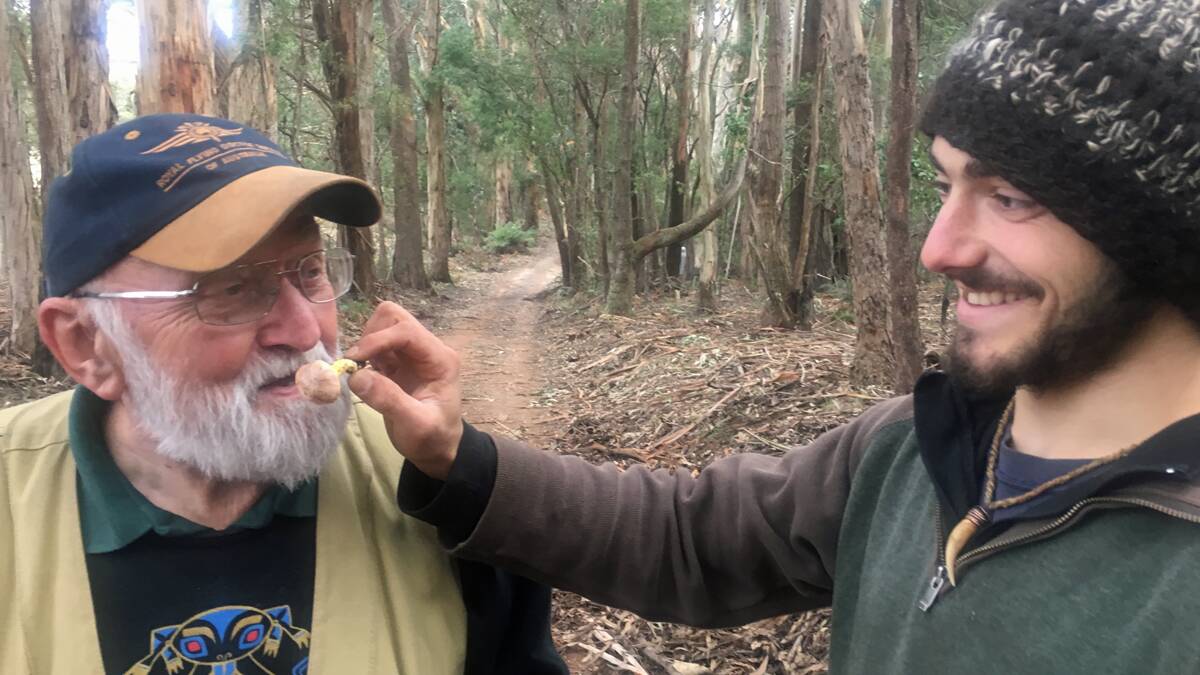The delights of truffled food was an important focus of the recent Truffle Festival at BCS but there was an associated gathering of distinguished mycologists and ecologists scientists whose lectures revealed the depth of local and international networking in the field of Fungi and in particular native truffles.
Subscribe now for unlimited access.
$0/
(min cost $0)
or signup to continue reading

Emeritus Professor Jim Trappe of Oregon State University, a world leading Mycologist and his associate Mycologist Todd Elliot from North Carolina, had just returned from a field expedition in the desert near Uluru, supported by Dr Lynette Liddle - a local researcher. They spent two days with female elders, in their eighties and nineties, searching for the native truffle these people traditionally harvested and ate as part of their seasonal diet. An Elder led them to a large truffle of a likely new species.
Professor Trappe will now do a full taxonomic investigation of this discovery. If confirmed as new he will be asking permission from the Elder to name it after her.
Professor Jim and Todd also found time to identify thirteen native truffle species in the Monga forest. Two appear to be new species, to add to the 400 currently described.
Dr Karl Vernes of the New England University was also present. Dr Karl’s field of research is small native animals and their importance to the health of our native forests. As was revealed in the series of lectures on Saturday our native eucalypts are dependent for nutrients on the mycelium of the truffle fungi. The fungi create soil and are dependent on small marsupials digging up, eating and spreading the spore bodies to inoculate new trees. The marsupials digging for food break up water repellent soils and bury fire fuel. The destruction of these little creatures by foxes and cat is changing everything for the worse.
The message on Saturday was clear. The balance between our trees, truffles and native animals is being eroded badly. Cats and foxes must be eliminated if we are to save our forest and woodland ecosystems from flood and fire. This crisis issue deserves a national effort of the highest order.
Todd Elliot will commence research for his PhD later this year under the guidance of Dr Vernes at the University of New England. He will continue to receive academic support from Professor Trappe, Oregon State Uni. Dr Vernes, Professor Trappe and Elliot will research the role of the tree kangaroo and fungi in the tropical forest in PNG, microbat flight patterns under thermal imagery, nutrient access and soil building by fungal mycelia .
Professor Trappe has been visiting Australia for decades and has worked closely over that time with scientists from ANU on the Mulligans Flat predator proof bush rehabilitation project.
Also present was Professor Tim Roberts from the Tom Farrell Institute for the Environment at the University of Newcastle. Tim is particularly interested in the role of mycorrhizals to enhance mine site rehabilitation and in the biogeoengineering work conducted by Terra Preta Truffles.
There will be a project afoot for collaboration between Australian scientists and the international mycologists, with the Auckland University and NZ Farm Forestry Association to study mycorrhizals in NZ forests, Colin Samundsett, forester, is running a program to propagate and inoculate endangered tree species held at Hackfalls Arboretum NZ.
Other international visitors for the weekend were Daisy and Ron Slowik and their son Bernard of Montana and Clarke Field Philippines .The Rondeyvo- Crossfire Assistance Fund is financing research and community engagement in the development of oyster mushroom malarial mosquito traps at Bagio University, Philippines.
So whilst the food focus was on the European black truffle for our second Braidwood Central Truffle event, the weekend also provided an amazing opportunity for locals and visitors to listen to and exchange ideas with a group of highly reputed national and international scientists.
The festival will occur again next year with an even greater emphasis on scientific research and education regarding the Australian bush environment.

